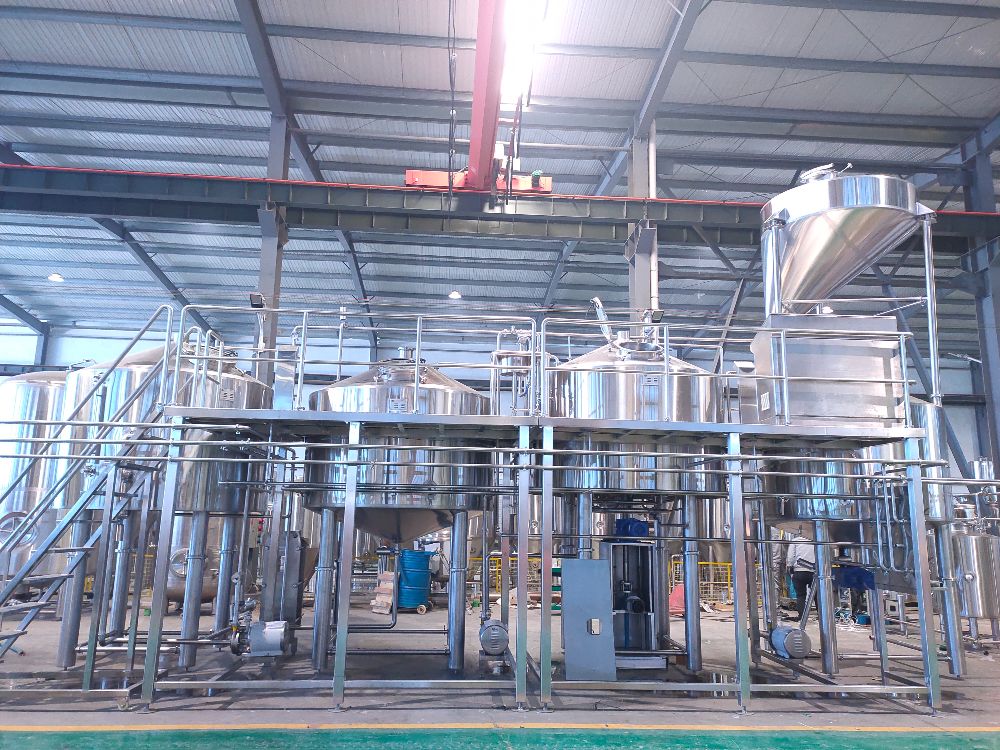Glycol Chiller System for Brewery Equipment
- Aug 16, 2024
- 193
- tiantai
I.What is glycol chiller system used for in a brewery?
When it comes to beer brewing, there are two main procedures needing glycol chiller system.
First procedure is the wort cooling in heat exchanger. Glycol chiller system would chill hot wort to fermentation temperature in 30-50 minutes.
Second procedure is beer cooling in fermenter/brite tank. Glycol chiller system maintains beer in a optimal temperature for yeast activity and fermentation.
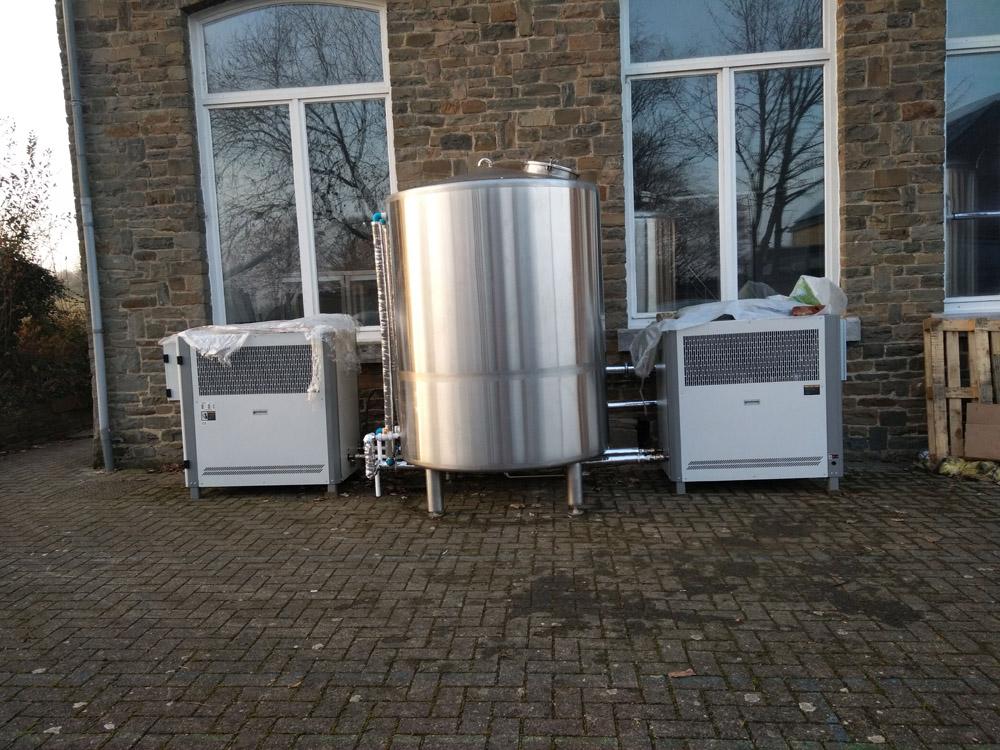
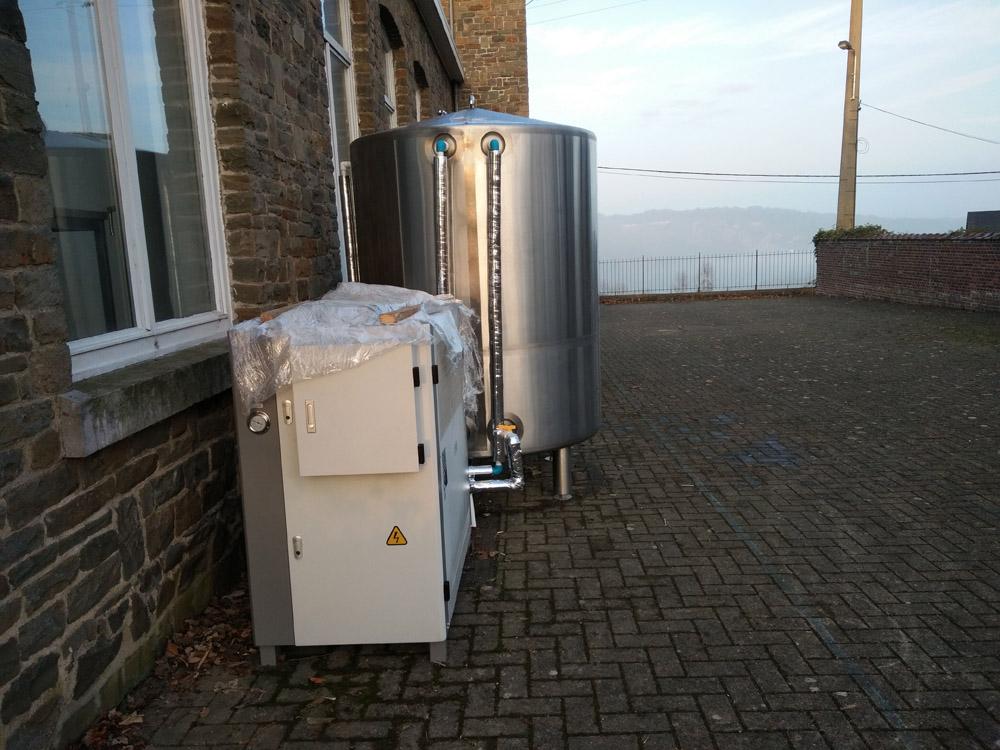
II.What is common configuration of glycol chiller system?
In breweries, common glycol chiller system includes three types.
Type 1: Double Size Glycol Water Tank + Glycol Chillers + Pipeline
Type 2: Single Size Glycol Water Tank + Double Size Cold Liquor Tank + Glycol Chiller + Pipeline
Type 3: Chiller with Small Glycol Water Tank + Pipeline
III.What is principle of these three types glycol chiller system?
Type 1: Double Size Glycol Water Tank + Glycol Chillers + Pipeline
Schematic Diagram as Below:

Procedure 1: Wort cooling in double stage heat exchanger
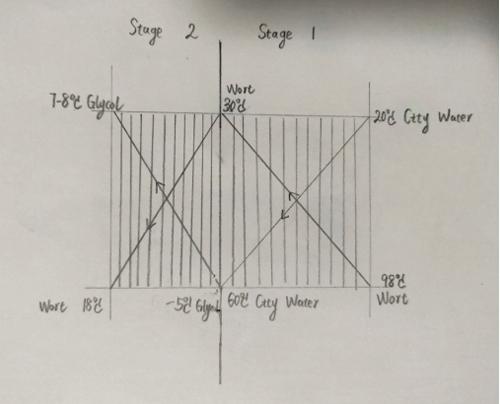
Stage 1: Coolant: City water; Quantity: 1.5~2 times.
Temperature change: City water from 20℃ to 60℃, wort from 98℃ to 30℃.
Stage 2: Coolant: Glycol water; Quantity: 0.8~1 times.
Temperature change: Glycol water from -5℃ to 7-8℃, wort from 30℃ to 18℃.
The wort should be cooled to fermentation temperature in 30-50 minutes.
Procedure 2: Beer cooling in fermenter/brite tank
During primary fermentation, the beer temperature is usually kept at 12-18℃, so the glycol water temperature can be -5 but can also be 2-3, not very strict. But, when moving ahead to secondary fermentation, the beer temperature must be much lower, around 2-4℃. In order to exchange heat efficiently, the glcyol water temperature had better be -5℃.
Application: 2000L and smaller brewery; 1-2 batches per day; within 12 sets fermenters.
Common Questions:
A.Why do we recommend double size glycol water tank?
For example, 1000L brewhouse with 2000L Glycol water tank.
In craft beer brewery, it is very common to brew 1 or 2 batches per day. Here, let us assume the brewmaster brews 2 batches per day. After the first batch wort is cooled, around 800L-1000L glcyol water is heated from -5℃ to 7-8℃, then comes back to glcyol water tank. If the glycol water tank is single size 1000L, it means 80% even all of glcyol water in glcyol water tank is 7-8℃. In this case, it is very difficult to chill the glycol water to -5℃ before second batch wort cooling comes. Furthermore, if some fermenters are in secondary fermentation and the beer actual temperature is higher than target temperature, glycol water pump and solenoid valve would open automatically, then 7-8℃ glycol water would runs into jacket for beer cooling although its temperature is higher than beer actual temperature, which would affect beer flavor seriously. On the contrary, if the glcyol water tank is double size 2000L, it can avoid this problem to some degree. When 800L-1000L 7-8℃ glycol water comes back to glycol water tank, it would mix with 1000L-1200L -5℃ glycol water firstly, then the temperature of mixing glycol water should be around 1-2℃. It is acceptable for both primary fermentation and secondary fermenter. Also it can be chilled to -5℃ timely prior to second batch wort cooling.
B.Why does glycol pipeline need to add a bypass with valve?
Although only one or two fermenters needs to be cooled during beer fermentation, the glcyol water pump would fully open. However, it is not easy for one or two branches to balance all of pressure comes from glcyol water tank. If so, the pipeline pressure is very high, which might do harms to pipe, solenoid valve and pump etc. Therefore, we add a bypass with valve. It can help to balance the pressure. And the glycol water running through bypass would come back to glcyol water tank, which does not have any waste.
Type 2: Single Size Glycol Water Tank + Double Size Cold Liquor Tank + Glycol Chiller + Pipeline
Schematic Diagram as below:
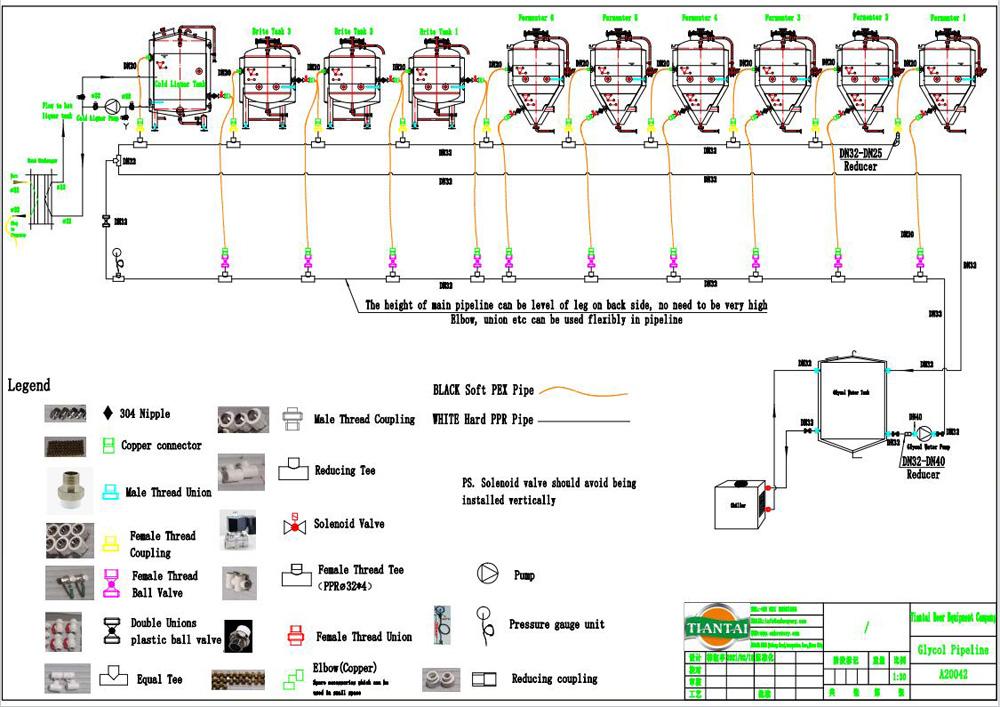
Procedure 1: Wort cooling in sing stage heat exchanger
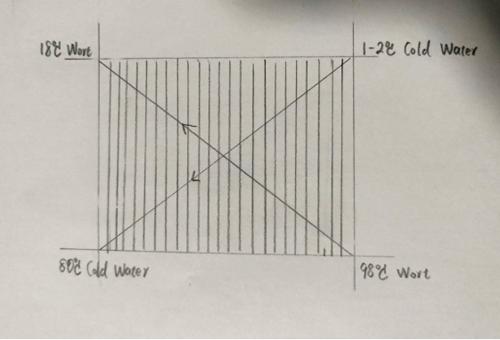
Coolant: Cold water; Quantity: 1.2times.
Temperature change: Cold water from 1-2℃ to 80℃, wort from 98℃ to 18℃.
The wort should be cooled to fermentation temperature within 30-50 minutes.
Procedure 2: Beer cooling in fermenter/brite tank
Same with Type 1.
Application: 2000L and larger brewery; 1 or more batches per day; within 15-18 sets fermenter.
Common Questions
Why do we need to add cold liquor tank? What is the advantage to add cold liquor tank?
In micro or commercial brewery(2000L and larger), the fermenter/brite quantity is increased obviously and the brewmaster is going to brew 2 or more batches per day in order to maximize the profit. So, it is necessary to upgrade the glycol chiller system. If we just largen glycol water tank and chiller based on first glycol chiller system, it is workable but not best. For example, the glycol demand would rise rapidly as glycol water tank expands, but the glycol in many countries is very expensive. Besides, the chiller is likely to have unexpected problems under heavy workload. So, we add one extra tank called cold liquor tank(CLT).
The cold water in CLT usually keeps 1-2℃, which is specially used for wort cooling. Accordingly, the heat exchanger is changed from double stage to single stage. It is more efficient, as well as more safe. The wort would not be contaminated although some problems happens to heat exchanger by accident. After exchanging heat, the temperature of cold liquor tank is warming up to 80℃ at least. It can be recycled to hot liquor tank directly for next batch brewing. In addition, the cold water in CLT can be cooled in advance, which reduce the chiller’s workload greatly and avoid wort cooling & beer cooling using glycol water at same time. If so, the glycol water tank can be much smaller as beer cooling in fermenter/brite tank does not need too much cold power.
Type 3: Chiller with Small Glycol Water Tank + Pipeline
This glycol chiller system is very similar with first one. The sole difference is that the capacity of glycol water tank diminishes much, 100-200L, even smaller which can be placed in chiller. Accordingly, the chiller has to work continuously.
Application: When the wort cooling and beer cooling share one same glycol chiller system, we still recommend the first and second glycol chiller system. When the brewhouse and fermenter are separated and the fermenter needs individual glycol chiller system, we can adopt such glycol chiller system. It can save a certain budget.
These three types of glycol chiller system has been able to meet the request of most of breweries. But, when the fermenter/brite tank quantity is enormous, we can consider to add extra glycol water pump in addition to increase glycol water tank, cold liquor tank and chiller.
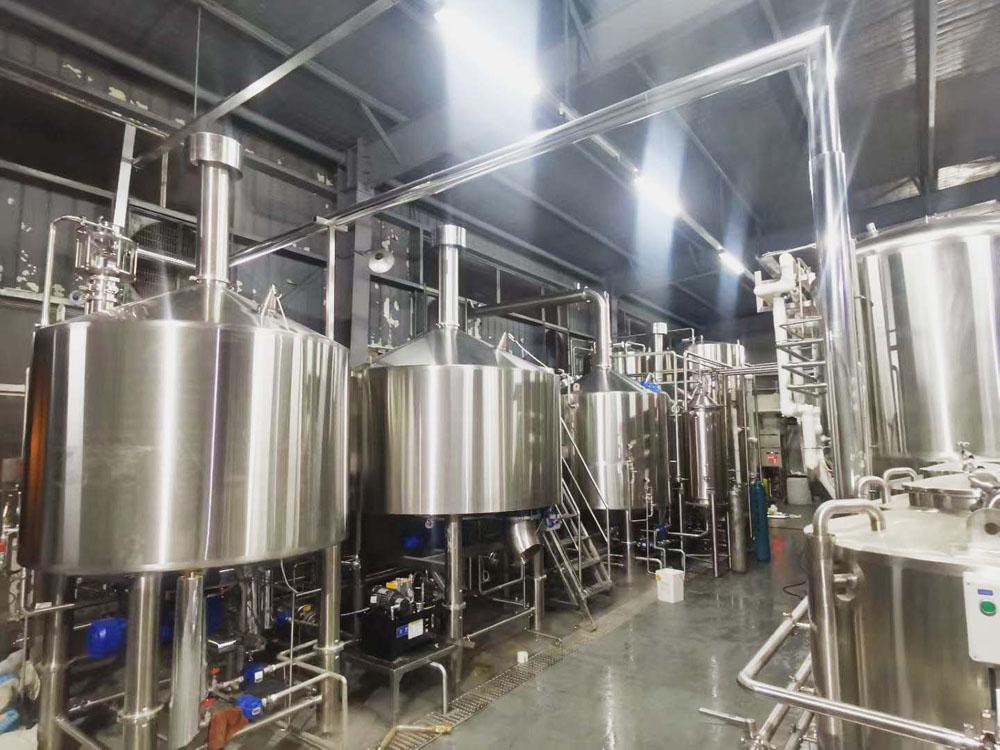
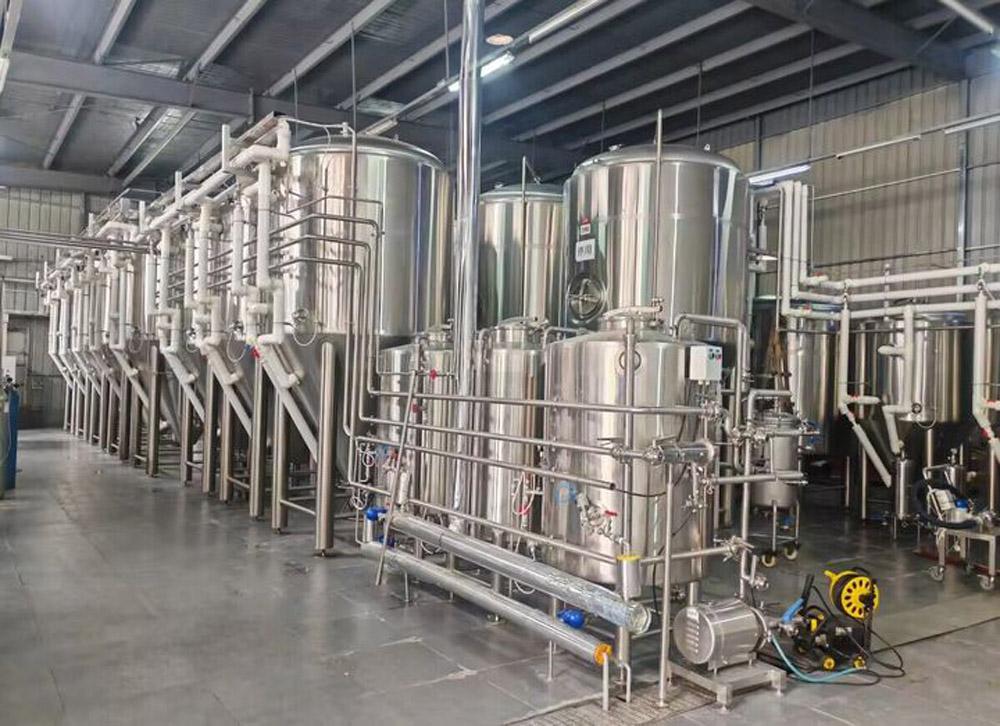
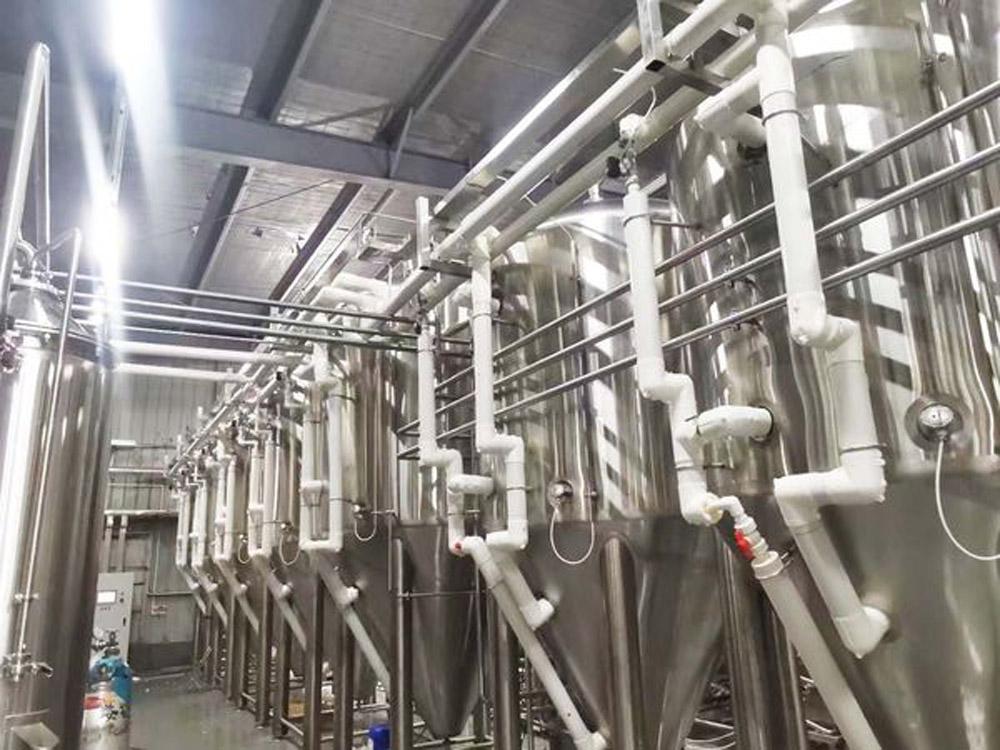
Hope our sharing can help to work out suitable glycol chiller system for your brewery equipment.
Any further comments, questions or suggestions, feel free to contact us please.
Edited by Vicky
Sales manager in Tiantai Brewtech
Email: [email protected]
When it comes to beer brewing, there are two main procedures needing glycol chiller system.
First procedure is the wort cooling in heat exchanger. Glycol chiller system would chill hot wort to fermentation temperature in 30-50 minutes.
Second procedure is beer cooling in fermenter/brite tank. Glycol chiller system maintains beer in a optimal temperature for yeast activity and fermentation.


II.What is common configuration of glycol chiller system?
In breweries, common glycol chiller system includes three types.
Type 1: Double Size Glycol Water Tank + Glycol Chillers + Pipeline
Type 2: Single Size Glycol Water Tank + Double Size Cold Liquor Tank + Glycol Chiller + Pipeline
Type 3: Chiller with Small Glycol Water Tank + Pipeline
III.What is principle of these three types glycol chiller system?
Type 1: Double Size Glycol Water Tank + Glycol Chillers + Pipeline
Schematic Diagram as Below:

Procedure 1: Wort cooling in double stage heat exchanger

Stage 1: Coolant: City water; Quantity: 1.5~2 times.
Temperature change: City water from 20℃ to 60℃, wort from 98℃ to 30℃.
Stage 2: Coolant: Glycol water; Quantity: 0.8~1 times.
Temperature change: Glycol water from -5℃ to 7-8℃, wort from 30℃ to 18℃.
The wort should be cooled to fermentation temperature in 30-50 minutes.
Procedure 2: Beer cooling in fermenter/brite tank
During primary fermentation, the beer temperature is usually kept at 12-18℃, so the glycol water temperature can be -5 but can also be 2-3, not very strict. But, when moving ahead to secondary fermentation, the beer temperature must be much lower, around 2-4℃. In order to exchange heat efficiently, the glcyol water temperature had better be -5℃.
Application: 2000L and smaller brewery; 1-2 batches per day; within 12 sets fermenters.
Common Questions:
A.Why do we recommend double size glycol water tank?
For example, 1000L brewhouse with 2000L Glycol water tank.
In craft beer brewery, it is very common to brew 1 or 2 batches per day. Here, let us assume the brewmaster brews 2 batches per day. After the first batch wort is cooled, around 800L-1000L glcyol water is heated from -5℃ to 7-8℃, then comes back to glcyol water tank. If the glycol water tank is single size 1000L, it means 80% even all of glcyol water in glcyol water tank is 7-8℃. In this case, it is very difficult to chill the glycol water to -5℃ before second batch wort cooling comes. Furthermore, if some fermenters are in secondary fermentation and the beer actual temperature is higher than target temperature, glycol water pump and solenoid valve would open automatically, then 7-8℃ glycol water would runs into jacket for beer cooling although its temperature is higher than beer actual temperature, which would affect beer flavor seriously. On the contrary, if the glcyol water tank is double size 2000L, it can avoid this problem to some degree. When 800L-1000L 7-8℃ glycol water comes back to glycol water tank, it would mix with 1000L-1200L -5℃ glycol water firstly, then the temperature of mixing glycol water should be around 1-2℃. It is acceptable for both primary fermentation and secondary fermenter. Also it can be chilled to -5℃ timely prior to second batch wort cooling.
B.Why does glycol pipeline need to add a bypass with valve?
Although only one or two fermenters needs to be cooled during beer fermentation, the glcyol water pump would fully open. However, it is not easy for one or two branches to balance all of pressure comes from glcyol water tank. If so, the pipeline pressure is very high, which might do harms to pipe, solenoid valve and pump etc. Therefore, we add a bypass with valve. It can help to balance the pressure. And the glycol water running through bypass would come back to glcyol water tank, which does not have any waste.
Type 2: Single Size Glycol Water Tank + Double Size Cold Liquor Tank + Glycol Chiller + Pipeline
Schematic Diagram as below:

Procedure 1: Wort cooling in sing stage heat exchanger

Coolant: Cold water; Quantity: 1.2times.
Temperature change: Cold water from 1-2℃ to 80℃, wort from 98℃ to 18℃.
The wort should be cooled to fermentation temperature within 30-50 minutes.
Procedure 2: Beer cooling in fermenter/brite tank
Same with Type 1.
Application: 2000L and larger brewery; 1 or more batches per day; within 15-18 sets fermenter.
Common Questions
Why do we need to add cold liquor tank? What is the advantage to add cold liquor tank?
In micro or commercial brewery(2000L and larger), the fermenter/brite quantity is increased obviously and the brewmaster is going to brew 2 or more batches per day in order to maximize the profit. So, it is necessary to upgrade the glycol chiller system. If we just largen glycol water tank and chiller based on first glycol chiller system, it is workable but not best. For example, the glycol demand would rise rapidly as glycol water tank expands, but the glycol in many countries is very expensive. Besides, the chiller is likely to have unexpected problems under heavy workload. So, we add one extra tank called cold liquor tank(CLT).
The cold water in CLT usually keeps 1-2℃, which is specially used for wort cooling. Accordingly, the heat exchanger is changed from double stage to single stage. It is more efficient, as well as more safe. The wort would not be contaminated although some problems happens to heat exchanger by accident. After exchanging heat, the temperature of cold liquor tank is warming up to 80℃ at least. It can be recycled to hot liquor tank directly for next batch brewing. In addition, the cold water in CLT can be cooled in advance, which reduce the chiller’s workload greatly and avoid wort cooling & beer cooling using glycol water at same time. If so, the glycol water tank can be much smaller as beer cooling in fermenter/brite tank does not need too much cold power.
Type 3: Chiller with Small Glycol Water Tank + Pipeline
This glycol chiller system is very similar with first one. The sole difference is that the capacity of glycol water tank diminishes much, 100-200L, even smaller which can be placed in chiller. Accordingly, the chiller has to work continuously.
Application: When the wort cooling and beer cooling share one same glycol chiller system, we still recommend the first and second glycol chiller system. When the brewhouse and fermenter are separated and the fermenter needs individual glycol chiller system, we can adopt such glycol chiller system. It can save a certain budget.
These three types of glycol chiller system has been able to meet the request of most of breweries. But, when the fermenter/brite tank quantity is enormous, we can consider to add extra glycol water pump in addition to increase glycol water tank, cold liquor tank and chiller.



Hope our sharing can help to work out suitable glycol chiller system for your brewery equipment.
Any further comments, questions or suggestions, feel free to contact us please.
Edited by Vicky
Sales manager in Tiantai Brewtech
Email: [email protected]


.jpg)
